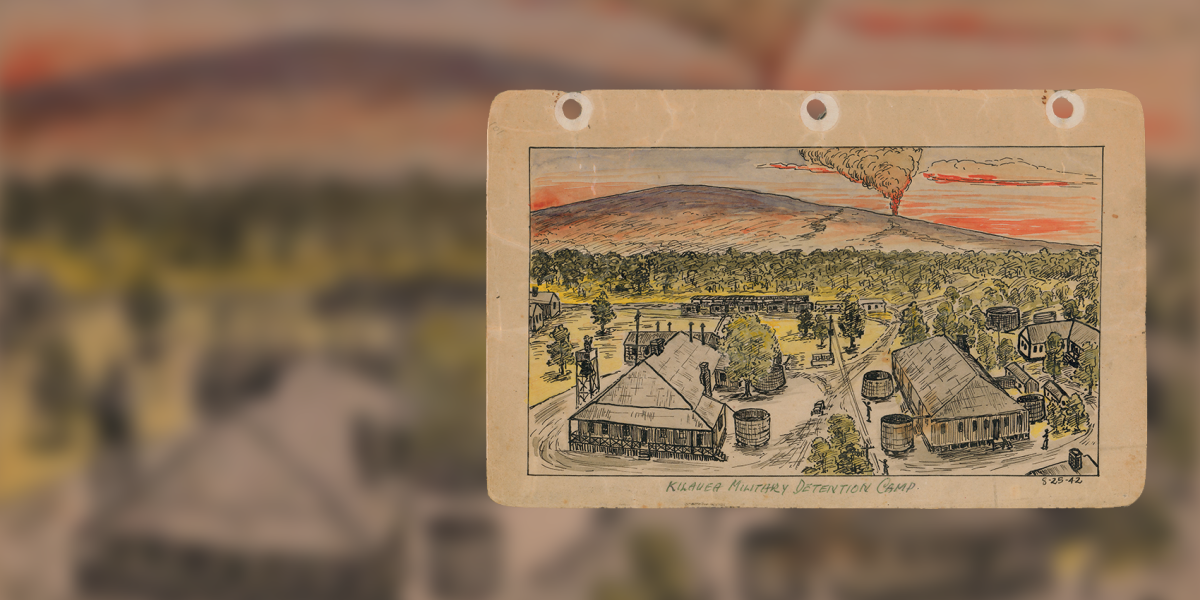

The December 7, 1941 attack on the U.S. Navy base at Pearl Harbor, Hawai‘i by the nation of Japan plunged the United States into World War II and irrevocably changed the course of American history. But for thousands of Americans of Japanese ancestry living in the Hawaiian Islands and the mainland, the war highlighted the great divide between their American ideals and their unfair treatment based solely on race.
The Japanese first immigrated to Hawai‘i in 1885 to work as laborers in the burgeoning plantations. By the time of World War II, the Japanese immigrants and the subsequent generations born on the Islands had developed extensive communities and demonstrated their centrality to the Hawaiian economy. They worked on plantations, owned shops, practiced trades, founded churches and temples, and organized sports leagues, Japanese language schools, and martial arts clubs—all characteristic of a stable and growing community, a community that was making a commitment to a new homeland on the Islands. However, the United States had long been suspicious of immigrants who “looked” different. Hawai‘i was not yet a state, but on the Mainland numerous laws and court decisions created a hierarchy that limited the Japanese immigrant’s ability to become an American.
After the bombing of Pearl Harbor, martial law was declared in Hawai‘i and Japanese American community leaders were singled out as “suspicious.” Although the Japanese Americans in Hawai‘i had posed no prior threat, community leaders were thought to be potentially harmful to United States security despite the fact that no evidence existed to link Japanese Americans in Hawai‘i with the acts of Japan, except by virtue of ancestry. By December 9, over 120 community leaders were taken from their homes and incarcerated in Hawai‘i.¹ George Hoshida was one such person.
This microsite honors the spirit and talent of George Hoshida (1907–1985), an incarcerated artist who documented camp life with pencil and brushwork in a series of notebooks he kept between 1942 and 1945. Through examples of Hoshida’s artwork and personal correspondence with his family, this site hopes to provide insight into one individual’s incarceration experience.
The pages of this microsite are organized chronologically by the camps where George Hoshida and his family were incarcerated. Hoshida’s notebooks and letters are now part of the June Honma Collection deposited at the Japanese American National Museum in Los Angeles, California. In addition to Hoshida’s personal documents, a select number of secondary sources were used to develop this site.
¹ On the mainland, over 1,000 community leaders were incarcerated in Justice Department internment camps immediately after the attack on Pearl Harbor. In February 1942, Executive Order 9066 paved the way for the further incarceration of all Japanese Americans living on the West Coast.
About this Site
This site was originally created and launched in 1997 as an independent class project for Development of Cultural Information Resources Using Digital Multimedia (LIS208) at the Graduate School of Education and Information Studies at the University of California at Los Angeles. All works displayed are owned by the Honma Collection which resides at the Japanese American National Museum in Los Angeles.
All text was written specifically for this site using publications and primary source material in the collection of the Japanese American Museum. The content for the site was moved into a new microsite on janm.org in 2023. Some text/captions were updated and newer scans of the artwork were used for the expanded galleries.
This is a carousel. This section contains multiple slides with links to event related exhibitions. Use the left and right arrow buttons to navigate.
